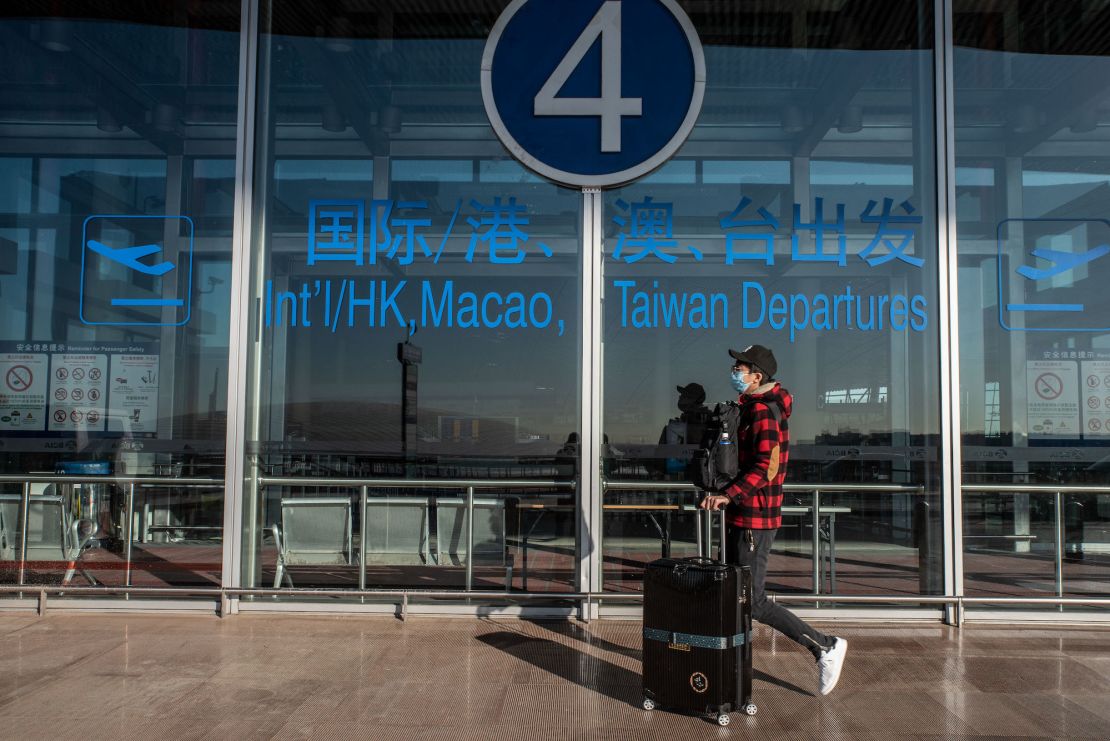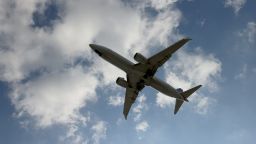In the years before Covid, China was the world’s most important source of international travelers. Its 155 million tourists spent more than a quarter of a trillion dollars beyond its borders in 2019.
That largesse fell precipitously over the past three years as the country essentially closed its borders. But, as China prepares to reopen on Sunday, millions of tourists are poised to return to the world stage, raising hopes of a rebound for the global hospitality industry.
Although international travel may not return immediately to pre-pandemic levels, companies, industries and countries that rely on Chinese tourists will get a boost in 2023, according to analysts.
China averaged about 12 million outbound air passengers per month in 2019, but those numbers fell 95% during the Covid years, according to Steve Saxon, a partner in McKinsey’s Shenzhen office. He predicts that figure will recover to about 6 million per month by the summer, driven by the pent-up wanderlust of young, wealthy Chinese like Emmy Lu, who works for an advertising company in Beijing.
“I’m so happy [about the reopening]! ” Lu told CNN. “Because of the pandemic, I could only wander around the country for the past years. It was difficult.”
“It’s just that I’ve been stuck inside the country for a little too long. I’m really looking forward to the lifting of the restrictions, so that I can go somewhere for fun! ” the 30-year-old said, adding that she wanted to visit Japan and Europe the most.

As China announced last month it would no longer subject inbound travelers to quarantine starting January 8, including residents returning from trips abroad, searches for international flights and accommodations immediately hit a three-year high on Trip.com (TCOM).
Bookings for overseas travel during the upcoming Lunar New Year holiday, which falls between January 21 and January 27 this year, have soared by 540% from a year ago, according to data from the Chinese travel site. Average spending per booking jumped 32%.
The top destinations are in the Asia Pacific region, including Australia, Thailand, Japan and Hong Kong. The United States and the United Kingdom also ranked among the top 10.
“The rapid buildup in … [bank] deposits over the past year suggests that households in China have accumulated significant cash holdings,” said Alex Loo, a macro strategist for TD Securities, adding that frequent lockdowns have likely led to restraints on household spending.
There could be “revenge spending” by Chinese consumers, mirroring what happened in many developed markets when they reopened early last year, he said.
Who benefits?
That’s good news for many economies battered by the pandemic.
“We estimate that Hong Kong, Thailand, Vietnam and Singapore would benefit the most if China’s travel service imports were to return to 2019 levels,” said Goldman Sachs analysts。
Hong Kong — the world’s most visited city with just under 56 million arrivals in 2019, most of them from mainland China — could see an estimated 7.6% boost to its GDP as exports and tourism income increase, they said. Thailand’s GDP may be boosted by 2.9%, while Singapore would get a lift of 1.2%.
Elsewhere in the world, Cambodia, Mauritius, Malaysia, Taiwan, Myanmar, Sri Lanka, South Korea and Philippines are also likely to benefit from the return of Chinese tourists, according to research by Capital Economics.
Hong Kong has suffered particularly acutely from the closure of its border with mainland China. The city’s pillar industries of tourism and real estate have been hit hard. The financial hub expects GDP to have contracted by 3.2% in 2022.
The city government announced Thursday that up to 60,000 people would be allowed to cross the border daily each way, starting Sunday.
Several other Southeast Asian countries reliant on tourism have kept entry rules relatively relaxed for Chinese tourists, despite the record Covid-19 outbreak that has swept through China in recent weeks. They include Thailand, Indonesia, Singapore and the Philippines.
“This is one of the opportunities that we can accelerate economic recovery,” Thailand’s health minister said this week.
New Zealand has also waived testing requirements for Chinese visitors, who were the second largest source of tourist revenue for the country before the pandemic.
Who wants testing?
But other governments are more cautious. So far, nearly a dozen countries, including the United States, Germany, France, Canada, Japan, Australia and South Korea, have mandated testing.
The European Union on Wednesday “strongly encouraged” its members states to require a negative Covid test for visitors from China before arrival.
There is clearly “conflict” between the tourism authorities and the political and health officials in some countries, said Saxon, who leads McKinsey’s travel practice in Asia.
Airlines and airports have already blasted the EU’s recommendations for testing requirements.
The International Air Transport Association, the airline industry’s global lobby group, together with airports represented by ACI Europe as well as Airlines for Europe, issued a joint statement on Thursday, calling the EU move “regrettable” and “a knee-jerk reaction.”
But they welcomed the additional recommendation to test wastewater as a way of identifying new variants of the disease, saying it should be an alternative to testing passengers.
Full recovery?
Besides restrictions, it will take time for international travel to fully rebound because many Chinese must renew their passports and apply for visas again, according to analysts.
Lu from Beijing said she was still considering her travel plans, taking into consideration the various testing requirements and the high price of flying.
“The restrictions are normal, because everyone wants to protect people in their own country,” she said. “I’ll wait and see if some policies will be eased.”
Liu Chaonan, a 24-year-old in Shenzhen, said she had initially wanted to go to the Philippines to celebrate the Chinese New Year, but didn’t have time to apply for the visa. So she switched to Thailand, which offers quick and easy electronic permits.
“Time is short and I need to leave in about 10 days. People may choose some visa-friendly places and countries to travel to,” she said, adding that she plans to learn scuba diving and wants to buy cosmetics. Her total budget for the trip could exceed 10,000 yuan ($1,460).
Saxon said he expected China’s outbound international travel to fully recover by the year end.
“Generally, individuals are pragmatic and countries will welcome Chinese tourists due to their spending power,” he said, adding that countries may remove restrictions quickly when the Covid situation improves in China.
“It will take time for international tourism to get going, but it will come rushing back, when it happens.”









